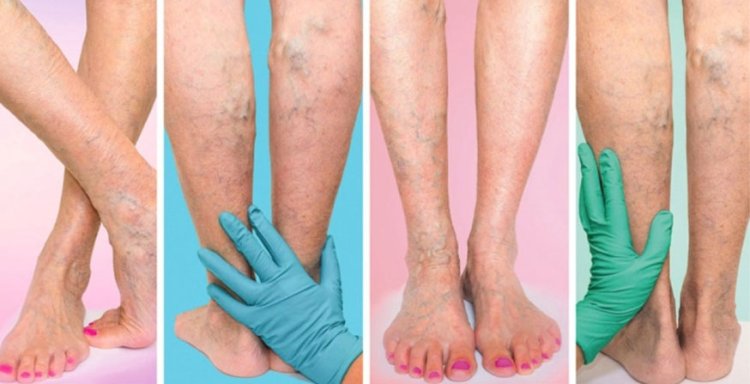Can Cold Water Help with Varicose Veins? Exploring the Benefits
Discover how cold water can relieve varicose veins discomfort. Learn the benefits, tips, and precautions to manage varicose veins effectively.

Introduction
Varicose veins are a common condition that affects millions worldwide, causing pain, swelling, and discomfort. While there are many treatments available, natural remedies such as cold water therapy are gaining popularity. But does cold water really help with varicose veins? In this article, we explore the benefits of using varicose veins cold water therapy and how it can provide relief.
Understanding Varicose Veins
Varicose veins occur when veins become enlarged, swollen, and twisted due to weak or damaged valves. This condition primarily affects the legs, causing pain, heaviness, and itching. Factors such as genetics, prolonged standing, pregnancy, and obesity contribute to varicose veins.
Common Symptoms of Varicose Veins:
-
Swollen, bulging veins
-
Aching and heaviness in the legs
-
Cramping and itching
-
Skin discoloration
How Cold Water Helps with Varicose Veins
Cold water therapy, also known as hydrotherapy, has been used for centuries to relieve various ailments, including circulatory issues. When applied to varicose veins, cold water provides several benefits:
1. Improves Blood Circulation
Cold water constricts blood vessels, which helps push blood back toward the heart, reducing pooling in the veins. This improves circulation and reduces swelling.
2. Reduces Swelling and Inflammation
Swollen veins are a major symptom of varicose veins. Cold water therapy reduces inflammation by numbing the affected area and decreasing fluid retention.
3. Alleviates Pain and Discomfort
Cold water provides a soothing effect by numbing nerve endings, temporarily relieving pain and discomfort associated with varicose veins.
4. Strengthens Veins and Valves
Regular exposure to cold water can help strengthen vein walls and improve elasticity, preventing further damage.
5. Prevents Blood Clots
By improving circulation, cold water therapy reduces the risk of blood clot formation, which is a serious complication of varicose veins.
Best Ways to Use Cold Water for Varicose Veins Relief
If you’re considering using cold water therapy to manage varicose veins, here are some effective methods:
1. Cold Water Showers
End your shower with cold water for at least 30 seconds to improve circulation and reduce swelling. Focus on the affected areas, moving the water stream up and down your legs.
2. Cold Water Soaks
Fill a tub with cold water and immerse your legs for 10-15 minutes. This method provides quick relief from pain and inflammation.
3. Ice Packs
Wrap an ice pack in a towel and place it on the affected veins for 15-20 minutes. This helps numb pain and reduce swelling.
4. Cold Compression Wraps
Use a cold compression wrap to apply steady pressure and cold therapy simultaneously, enhancing relief.
5. Alternating Hot and Cold Water Therapy
Switching between hot and cold water helps improve blood flow and strengthen veins. Start with warm water for a minute, then switch to cold for 30 seconds. Repeat the process 3-4 times.
Precautions When Using Cold Water Therapy
While cold water therapy offers many benefits, it's essential to take some precautions:
-
Avoid extreme temperatures: Never use freezing water directly on your skin, as it may cause damage.
-
Do not overdo it: Prolonged exposure to cold water can lead to numbness or frostbite.
-
Check for underlying conditions: If you have diabetes or circulatory disorders, consult a doctor before trying cold water therapy.
-
Listen to your body: If you experience discomfort or worsening symptoms, discontinue use and seek medical advice.
Additional Natural Remedies for Varicose Veins
While cold water therapy is beneficial, combining it with other natural remedies can enhance results.
1. Elevate Your Legs
Keeping your legs elevated above heart level for 15-20 minutes daily helps reduce swelling and improve circulation.
2. Wear Compression Stockings
Compression stockings support veins and prevent blood pooling, reducing symptoms.
3. Stay Active
Regular exercise, such as walking or yoga, strengthens leg muscles and promotes healthy circulation.
4. Maintain a Healthy Diet
Eating foods rich in fiber, antioxidants, and vitamins can help improve vein health and prevent varicose veins from worsening.
5. Massage Therapy
Gently massaging the affected areas with essential oils can stimulate circulation and relieve pain.
When to Seek Medical Treatment
Although cold water therapy and natural remedies provide relief, some cases require medical intervention. If you experience severe pain, ulcers, or persistent swelling, consult a doctor for advanced treatments like laser therapy, sclerotherapy, or surgery.
Conclusion
Using varicose veins cold water therapy can be an effective and natural way to manage symptoms. Cold water helps improve circulation, reduce swelling, and alleviate pain. However, it should be used alongside other lifestyle changes and medical advice for the best results. If your symptoms persist, consult a healthcare professional to explore other treatment options.
What's Your Reaction?

















